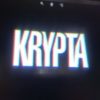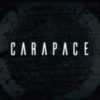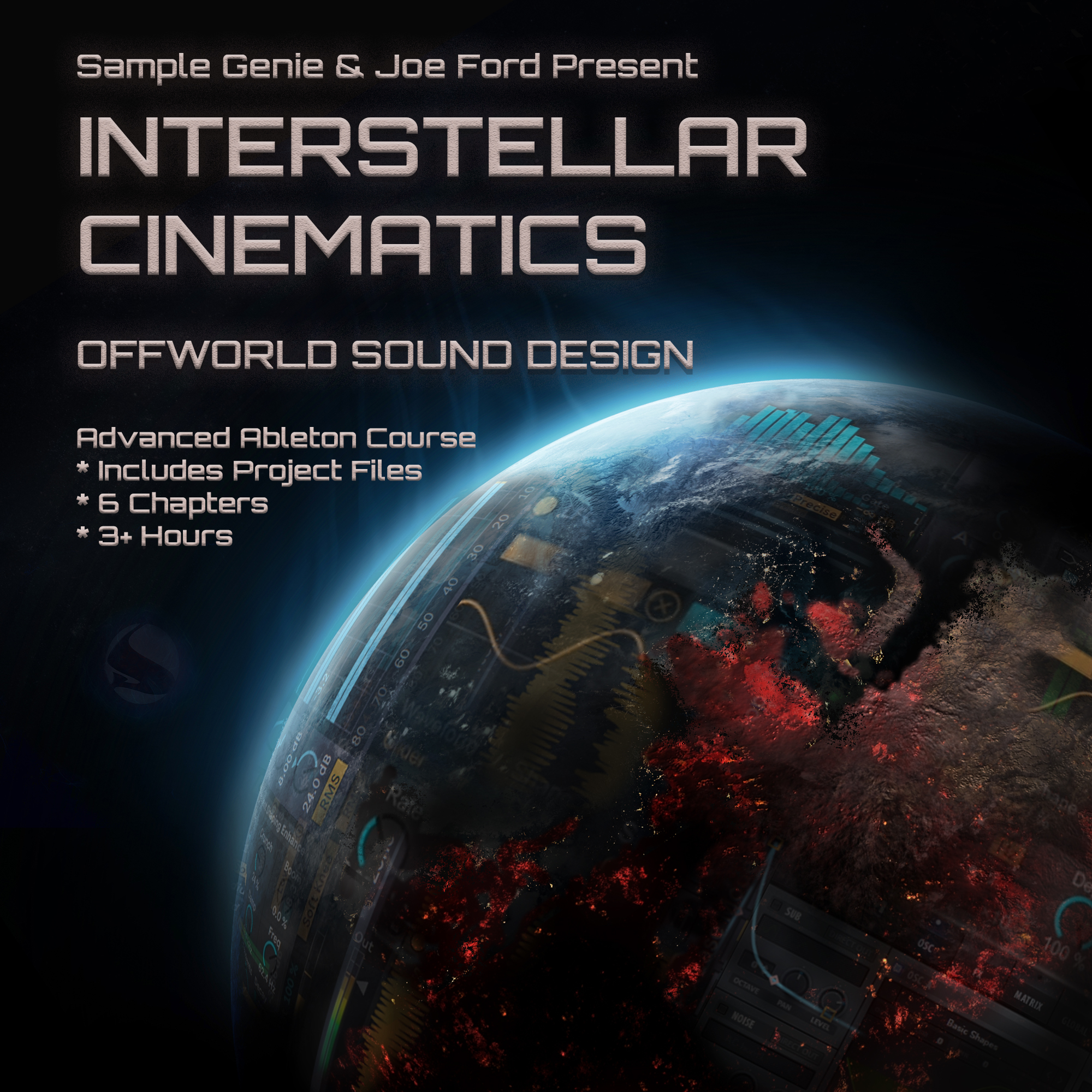QZB
- This topic has 78 replies, 7 voices, and was last updated 4 weeks ago by ,
 ADHD.
ADHD.
-
AuthorPosts
-
-
2018-09-02 at 20:51:21 #51256,
 BalronParticipant
BalronParticipantToday (while waiting for the QZB videos), I spent few hours with Operator – trying to finally make my own kick/snare, which I would use for this month Lamp Session. I managed to do a nice kick in the end btw.
Now I finally got to watch the first QZB video about drums and they started with kick done in Operator (that’s convenient for me 🙂 )… and they had a nice rack with macros done for it (something I haven’t done). When I saw the rack, I instantly thought “I have to go to SG forum and ask for that rack omg!”… but then I thought “well, maybe I should check the sample pack first… maybe there is something even though the racks aren’t something they usually include”. I went back to the finder, opened the pack and found “QZB_DRUM_Kick-Op.adg”. YES!!!
Thank you! 😀
I have just started the video and haven’t even listened to all the samples in the pack, but I already love the content for this month.
Great work both QZB and SG!https://soundcloud.com/balron
-
2018-09-02 at 21:38:29 #51260,
 GENIE HQKeymaster
GENIE HQKeymasterGreat to hear you found them! Not forgetting QZB_DRUM_Snare-Op.adg too 😀
-
2018-09-02 at 22:21:04 #51269,
 BalronParticipant
BalronParticipantYea, and also the bass rack 🙂
btw: Does anybody know where to get the MAX Device Randomizer? I don’t have it in my Suite installation and no Ableton pack seems to include it. I googled but only found a different randomizer device. A bit confused by that )
https://soundcloud.com/balron
-
2018-09-03 at 11:29:56 #51308,
 QZBParticipant
QZBParticipantRoll with the one you find, don’t know where we got the one we have. As mentioned, it’s not a specific tool, more a mindset. Use diff things and play around with it, as as it’s fun it’s the way to go. 🙂
-
2018-09-07 at 23:53:16 #51692,
 DanParticipant
DanParticipantI believe it’s part of the standard MAX4LIVE audio effects pack that comes with the software. Should be found here:
Max for Live/Max Audio Effect/Control Devices/Device Randomizer.amxdThere’s also a little tutorial on it here:
https://ask.audio/articles/randomizing-effects-and-devices-with-the-max-for-live-device-randomizer -
2018-09-08 at 07:33:50 #51697,
 BalronParticipant
BalronParticipantThanks, you are right. The device was hidden in the Max for Live Essentials pack (it didn’t list this specific device in the list at the website). Found it via the ‘Control Devices’ reference 🙂
https://soundcloud.com/balron
-
-
2018-09-03 at 05:49:08 #51285,
 TBCParticipant
TBCParticipantThis tutorial was very good. A lot of useful information and it was shown very well.
However, I have run into an issue with the operator patches. Whenever I try to load the patches I receive an error message: “This preset cannot be loaded.” It’s probably broken. This could be the version of ableton I’m using and it could be that the routing is not correct. I don’t know if anyone else has encountered this and found a solution.
-
2018-09-03 at 07:15:47 #51286,
 BalronParticipant
BalronParticipantAll 3 work for me. Seems like it’s a local issue.
Also, the bass one uses Wavetable, so you need Live 10 Suite.
https://soundcloud.com/balron
-
2018-09-03 at 11:09:46 #51301,
 QZBParticipant
QZBParticipantHey Bennett
The patches have been created with the latest version of Live 10. There is no legacy support for such presets unfo. :/
X
-
-
2018-09-03 at 07:16:40 #51287,
 DglgmutParticipant
DglgmutParticipantI think this is my first time posting but I really enjoyed QZB’s Tutorial. I really liked the part about levels when it comes to drums. I’ve always kinda find it hard to place my elements. I know these things are kinda arbitrary where you place stuff but I was curious if you guys had any general guide lines such at the one in the video. For example, if you’re drums peak at 6db, where should you sub and the leads peak at etc. This would interests me. I know its based on whether it sounds good or not but having a rule set is nice. Then I can break them if it suits the song.
-
2018-09-03 at 11:14:21 #51304,
 QZBParticipant
QZBParticipantWhen the drums peak on -6db, try to push the other elements accordingly as high as possible without peaking too much.
But if you need a cheat for it:
Drums = -6db
Sub = between -11db / -8db
Mids = between -11db / -8db with low cut
etc. -
2018-09-08 at 01:00:17 #51693,
 shrikeParticipant
shrikeParticipantNote also that you will get different answers from different producers, cuz that’s just how making art goes…
BUT
The best thing you can do is to start analyzing tunes and seeing where they peak out. Especially looking at tunes that are similar to what you want to create, this can be extremely useful. The data would be from a mastered song, but the levels are the levels, and there are many (MANY) artists who just mix right into a limiter and clipper and that’s it. I currently mix by making the lowest sub fundamental flick the 0dbfs line, and mix the rest of the components around that (my kick is usually -6 – -10, and snare is usually around -6).
QZB are obviously outstanding at their craft, and get very nice mixes and levels. But there are many answers out there, and my point is to study lots of music, and then lots of trial and error on your part.
_-| get to work |-_
-
-
2018-09-03 at 08:06:56 #51290,
 BalronParticipant
BalronParticipantJust finished the 3rd video. I enjoyed the workflow, which is similar to mine (nowadays). However, the whole leveling topic kinda disappeared over time. In the beginning, there was a lot of focus at -6dB. In the end, they just fiddled a bit with drum levels again and that was it. I was really curious about the mixdown part, so now I am left hanging with many unanswered questions 🙁
– Do you use -6dB primarily just at the kick and then level everything around (basically below) it – ignoring master level, or the point is to have both kick and master peaking -6 the whole time?
– Do you ever just turn down the master to get more headroom? (e.g. some ppl have all tracks peaking at 0 with soft clippers and then when they are asked to get 6dB of headroom for mastering, they just turn the master fader down 6 dB).
– If you do, why bother with -6 anyway?
– Do you keep ur sub level lower than kick the whole time and then push it during mastering? The spectrum analyzers usually show the subs as the loudest (‘louder’ than a kick).
– Do you do the master by yourself in Ableton as well?
– If you keep -6dB of headroom all the time, do you just push it with a limiter at the end, to get to the required loudness level?
– Also, why was the kick shit? 🙂https://soundcloud.com/balron
-
2018-09-03 at 11:02:39 #51299,
 GENIE HQKeymaster
GENIE HQKeymaster@Balron
Let’s see if we can get them on here to answer your q’s.
One thing to suggest (which might be staringly obvious) is that once you have set your reference point of 6db, the rest is very much open season. Using your ears most importantly to mix the parts around it so it sounds right. Every tune could be different, but in the case of using an analyser to mix by numbers, maybe QZB can give you more info.
And -6db is one method, previously Sub Focus and the Prototypes have been saying they stick to -10db. So there is no rule, but usually it’s found that the more parts you have going on in a tune (at the same time) the lower the faders have to be. Maybe this is why minamalists such as QZB work fine at -6?
All this headroom system is doing is a) giving you room to work and b) stopping the signal hitting the master channel too hot.Again let’s see if Ben or Thomas can jump in here and let you know their thoughts.
-
2018-09-03 at 11:26:04 #51305,
 QZBParticipant
QZBParticipant1. Yup, -6db is used as a reference point and we level everything around it. Usually the snares also hits at -6db straight. both kick and master level are peaking -6db all the time, in case it’s not possible anymore in the further production, we tend to periodically pull down all faders to make the peak -6db. (ofc please don’t use too much compression to get the most of dynamic range)
2. No, we never use clippers or compresssion on the maters. No unnecessary compression. As mentioned above, we draw all the faders down periodically during the production process, not just before the premasters. We apply slight multiband compression before bouncing the premaster, but nothing else is done on our end.
3. Mixdown is not only numbers, -6db is just a starting / reference point which we use throughout the production, there’s no golden rule here.
4. Low end is always very high in a spectrum analyzer due to it’s higher energy amount needed. We always keep the sub lower than the kick but level it in purely by ear (and a bit of number-levelling, but not too strict). Make sure your balancing sounds as good as it goes without the need to be pushed to infinity by further processing of your final track.
5. No, mastering is done by another person. When we do a premaster we apply Ozone 8 with a heavy gripping multiband and a heavy maximizer. When we deliver the premaster, we tone down the multiband and remove the maximizer.
6. Subjective oppinion, just doesn’t sound clean. 🙂 toplayer wasn’t chosen well enough!
Hope we could help!
-
2018-09-03 at 11:34:48 #51309,
 BalronParticipant
BalronParticipantAwesome, thank you!
I find deep/minimal dnb mixdown as another field of magic (different than neurofunk), so it’s great to get at least some insight into it from the top magicians 😉
https://soundcloud.com/balron
-
2018-09-07 at 11:21:38 #51662,
 thisisberkoParticipant
thisisberkoParticipantHello! Could you describe the main differences you realized?
-
-
2018-09-03 at 10:45:58 #51296,
 bennettParticipant
bennettParticipantGenies, this QZB release is the standard I would love to see from future videos. 2 hours of very informative video.
Sometimes feel short-changed when we get a 25-30 minute video that doesn’t really cover anything new or in any particular depth.
-
2018-09-03 at 10:54:14 #51297,
 GENIE HQKeymaster
GENIE HQKeymasterHi Bennett,
So to answer honestly: we may well have some of these longer videos in the future, but they won’t be the norm, we are always working to provide concise lessons, and so videos in the 45 minute range are what we mostly aim for, with a few exceptions. We can however always strive to get more detail in where necessary.
We are very aware that not every video will enlighten every viewer –
Given that a lot of people are at a more advanced stage. But that’s less to do with the video and more to do with that individual. We are also aware that combination of the monthly tutorial and the sample pack is very good value indeed, and feel strongly there is no short-changing going on.So trust us, we have some great tutorials lined up for this year – lot’s of goodness to come!
-
2018-09-03 at 11:11:14 #51303,
 BalronParticipant
BalronParticipant“a lot of people are at a more advanced stage”
Given this, it could be also nice to tell the genies to stop explaining the most basic concepts (e.g.: what’s sidechaining and why am I low cutting everything). Sometimes (to be honest: every time) it slows down the tutorial.
I guess we all understand this is what you would show while making a generic tutorial for masses, but when making them specifically for SG, the most basic things could be omitted in a favor of the more interesting content that is specific to the genie and their work.And yes, I am also aware of the fact that “the most basic” isn’t exactly a specific definition, but there are ways how to figure out how does the audience look like (e.g. surveys etc.).
I know this is a nitpicking, but I still believe it’s worth mentioning so please don’t take it as a hate. I am enjoying this month 😉
https://soundcloud.com/balron
-
2018-09-03 at 11:55:56 #51312,
 GENIE HQKeymaster
GENIE HQKeymasterSure we have done several surveys over the years, and it was a big part of working out how to design Sample Genie.
” the most basic things could be omitted in a favor of the more interesting content that is specific to the genie and their work.”
This is often the lesson itself…
People seem to use their overactive imaginations and lurking self doubt to think themselves into the certainty that xxx producer MUST be using mad techniques to get their sound.
THEY MUST TELL ME THEIR SECRETS! THEY ARE OBLIGED BY LAW!
But in fact, often there are no secrets. Just the usual tools used in the usual way, only by a patent, hardworking and attentive set of ears… this is often the inspiring thing to learn, in order to stop people fretting about decibels readings to the nearest decimal place.We will always cover basics as well as more advanced things, it’s just the nature of teaching people at a range of experience levels – something we have been doing for over a decade now.
If you like we could look into building ‘Balron Genie’ – a site dedicated specifically to what you need? 😉 -
2018-09-03 at 12:35:49 #51320,
 BalronParticipant
BalronParticipantSure, would sign up for that 😉
I was hesitating with that post because I kinda knew it would most likely trigger a defensive reaction. I really tried to emphasize that I like what I am getting here. However, it looks like I am getting annoying with all my “demands” (as they seem to be translated) so I’ll slow down.
Didn’t want to be ‘that guy who keeps bothering us’.
https://soundcloud.com/balron
-
2018-09-03 at 13:18:36 #51325,
 GENIE HQKeymaster
GENIE HQKeymasterThe art of carefully choosing words, is often harder than the art of carefully writing music..
No problem whatsoever in speaking your mind sir, but we reply to whatever words are on the page and defend or elucidate where required.
We get that there is a frustration (often positively so) always bubbling just under the surface of a developing music producer, yearning to develop; always thinking about it, wanting to improve: and fast! This is what guides a lot of the dialogue, so we do understand where it all comes from.
Anyway, all the best!
-
-
2018-09-03 at 12:00:39 #51316,
 shrikeParticipant
shrikeParticipantI dunno, man, I get that something like sidechaining is basic, but show me ten producers and they will have ten different ways they do it.
The concept is simple, but the crafting is not. So while I don’t need to be explained to what it is and why it’s done, I’m way tuned in to the details (is it multiband? Is it freq layering? How do you trig? Is it in fact gating, and not compression?).
_-| get to work |-_
-
2018-09-03 at 23:59:26 #51378,
 AaronParticipant
AaronParticipantYeah, probably my favourite tutorials so far, very useful especially with workflow/approach. Didnt get the sub op patch in this months samples tho? Seem to have a wavetable one instead. Big up anyway tho guys!!
-
2018-09-04 at 01:51:36 #51379,
 HarryModerator
HarryModeratorLooking forward to watching this later this week hopefully, very cool seeing QZB posting too. I often have some thoughts & questions on my analysis write ups, so might get some further insights!
"Knowledge kept is knowledge lost." - Bobbito Garcia
-
2018-09-04 at 16:20:46 #51446,
 EvanParticipant
EvanParticipantJust signed up today and really enjoyed the QZB tutorials! Don’t tell my boss but watched them at work! Look forward to dl the sample packs later this evening!
-
2018-09-04 at 18:54:57 #51454,
 Defender_Participant
Defender_ParticipantAny chance of the ‘hiphop sub’ patch being included as mentioned in the vid?
Great tutorial, got lots of cool little insights and tips, nice one guys 😀 -
2018-09-04 at 19:06:51 #51455,
 EvanParticipant
EvanParticipantJust downloaded September’s sample pack but no QZB samples? Am I missing something?
Nevermind found it!
-
2018-09-18 at 15:53:06 #52140,
 kenichi.sakudaParticipant
kenichi.sakudaParticipantwhere is it?!
-
-
2018-09-04 at 23:15:30 #51476,
 thomasfallon9Participant
thomasfallon9ParticipantHi, I was wondering can an ableton user (or QZB!) talk me through what’s going on with the snare patch? As I’m a cubase user.
I had a go at recreating that kind of kick using serum and addictive drums and found fairly good results straight away, but snares are often a different beast.
Big ups for the tutorials btw QZB, I really like the idea of creating ‘hybrid’ drums, the workflow with the resampling was really informative – lots of angles I hadn’t seen before and your lack of reliance on expensive plugins was a breath of fresh air too.
-
2018-09-05 at 00:30:03 #51477,
 shrikeParticipant
shrikeParticipantI can get you a quick overview; there’s a lot to cover, but essentially:
They are breaking up the 3 component pieces of a typical snare, meaning what happens physically when you hit a snare with a stick. These represent the different oscillators in operator (and yes you can use any synth to do, operator is just high speed low drag):
Osc 1 = body, IE the meat, and represents the largest vibration on the head of the snare
—this is often a sine wave, but could honestly be anything you want, as long as the fundamental freq pokes through properlyOsc 2 = transient, IE that ~10ms (depending on taste) initial attack of the drumstick hitting the skin of the drumhead
—they use a looped noise (looped so that it replicates the exact same on each hit) for the attack/xans portion, but you could experiment with all kinds of sounds for this component, depending on how far out there you want your snares to soundOsc 3 = snare buzz or noise, IE at -inf db you’ll have a dry snare, more like a tom than snare, and at 0db you would have the snares engaged and get that white noise after sound, which represents the snares themselves buzzing…the degree to which this happens in your synthesized snare represents how much tension the snares have against the bottom head…lots of subjective possibilities here
—they use a white noise, which is a pretty standard response to get a snare sound; IMO the white noise waveshape is a pretty important piece of the puzzleThe macros are just a nice thing that Live provides so that they can build it all out once and then use it over and over in different tunes, knowing that they want to adjust certain properties on each project
You can get a nice snare sound out of Serum, you really can, but don’t fall into the trap of thinking that it must sound bangin’ right out of the synth. You really just need to get the above three bits right, and then eq, saturation, compression, etc are your friends in getting a great snare sound. Think of the synth as giving you the uncooked ingredients to a meal, and the effects are the thing that bake it all down into something tasty.
That’s just a quick summary, and if you have more specific questions just ask.
I’ll also say: I used Logic and Cubase for years, and resisted using Live until just a few months ago. The speed and creativity that you can achieve in Live is just unparalleled in those more traditional DAWs (don’t flame, just my opinion). I wish I hadn’t resisted so hard, and the point is that because of the instrument/fx racks that you can build in Live like the ones they built for the drums are SO EFFICIENT, and have changed the game for me.
_-| get to work |-_
-
2018-09-07 at 00:05:05 #51645,
 thomasfallon9Participant
thomasfallon9ParticipantI can get you a quick overview; there’s a lot to cover, but essentially:
They are breaking up the 3 component pieces of a typical snare, meaning what happens physically when you hit a snare with a stick. These represent the different oscillators in operator (and yes you can use any synth to do, operator is just high speed low drag):
Osc 1 = body, IE the meat, and represents the largest vibration on the head of the snare
—this is often a sine wave, but could honestly be anything you want, as long as the fundamental freq pokes through properlyOsc 2 = transient, IE that ~10ms (depending on taste) initial attack of the drumstick hitting the skin of the drumhead
—they use a looped noise (looped so that it replicates the exact same on each hit) for the attack/xans portion, but you could experiment with all kinds of sounds for this component, depending on how far out there you want your snares to soundOsc 3 = snare buzz or noise, IE at -inf db you’ll have a dry snare, more like a tom than snare, and at 0db you would have the snares engaged and get that white noise after sound, which represents the snares themselves buzzing…the degree to which this happens in your synthesized snare represents how much tension the snares have against the bottom head…lots of subjective possibilities here
—they use a white noise, which is a pretty standard response to get a snare sound; IMO the white noise waveshape is a pretty important piece of the puzzleThe macros are just a nice thing that Live provides so that they can build it all out once and then use it over and over in different tunes, knowing that they want to adjust certain properties on each project
You can get a nice snare sound out of Serum, you really can, but don’t fall into the trap of thinking that it must sound bangin’ right out of the synth. You really just need to get the above three bits right, and then eq, saturation, compression, etc are your friends in getting a great snare sound. Think of the synth as giving you the uncooked ingredients to a meal, and the effects are the thing that bake it all down into something tasty.
That’s just a quick summary, and if you have more specific questions just ask.
I’ll also say: I used Logic and Cubase for years, and resisted using Live until just a few months ago. The speed and creativity that you can achieve in Live is just unparalleled in those more traditional DAWs (don’t flame, just my opinion). I wish I hadn’t resisted so hard, and the point is that because of the instrument/fx racks that you can build in Live like the ones they built for the drums are SO EFFICIENT, and have changed the game for me.
Thanks for this man, this was a big help.
I started to have a play around making drums in massive and serum tonight, still can’t believe you can make drums in a synthesizer – madness!
I followed what you said more or less: I used serum’s noise generator for the attack, pitched sine waves as the body (and ringing sound) and then layered with white noise.
I found tuning the individual layers together to be really important, as well as really dialing in and trialing different attack and decay times (prefer serum for this as you can see physical values for decay etc.). Then buss them all together – compression helps a lot, saturation, distortion, eq and finally reverb.
I just need to try layering different elements over them now.
It is getting harder and harder to resist Ableton, particularly when every tutorial you see uses it.
-
2018-09-07 at 00:47:55 #51650,
 shrikeParticipant
shrikeParticipantVery happy to help. Also happy to listen and give feedback if you’d like.
And yeah, Live is great, and Operator can make some pretty bangin’ drums too. Try Ableton. Give it a real shot, and especially watch how fast your ideas can not only be created (grouping is the key, for me), but stored for future use (IE instrument racks).
I switched, maybe, 3 months ago…? And I am much more productive and creative.
There truly is a reason it’s so widely used. It’s a beast.
_-| get to work |-_
-
-
2018-09-06 at 23:48:53 #51644,
 danny.bragg_93Participant
danny.bragg_93ParticipantThe QZB tutorial is ridiculous. Top quality stuff, all useful.
Is there a full version of the further worked on clip of the sketch anywhere?
Was sounding 11/10 and would be good insight to see how it developed in the end.-
2018-09-07 at 10:28:46 #51656,
 QZBParticipant
QZBParticipantUnfo nope, we scrapped it straight away after illustrating the tutorial. :/ You’ll get more insights into the other realms of the construction of the tune with our next tutorial.
-
-
2018-09-07 at 10:29:43 #51657,
 QZBParticipant
QZBParticipantThanks for the love guys! Really glad you like the tutorial!
X
-
2018-09-07 at 23:53:03 #51691,
Sunken Forest
ParticipantJust dropped by to say kudos to QZB on this month’s mammoth tutorial. Really well done.
Personally I really enjoyed this whole – start from scratch, moving quickly through the sketching phase process. It’s always interesting to hear workflow techniques that you can incorporate into your own in some way.
Plus,3 videos for the price of one. Mega bonus.
-
2018-09-15 at 09:57:08 #52009,
scapade@gmxde
ParticipantHi Guys, i really like the QZB Tutorial. Clear structured and very usefull information ! Good Job !
But in the Video is one Point where they said they’ll explain a Method to find out what Pitch you natural Sample is.. after processing the Snare.. that’s what i really want to know.. can’t find the Info ..can you Help?
THX!
-
2018-09-15 at 10:58:47 #52010,
 EvanParticipant
EvanParticipantI am also interested in hearing about their method of finding the pitch of your natural sample.
Cheers!
-
2018-09-15 at 12:07:33 #52013,
 thisisberkoParticipant
thisisberkoParticipantthere are several methods. a tuner plug-in (i use ableton’s built-in tuner) can be very useful. even if a sample is to short you can time stretch it to make it realisable. You can also use spectrum analyser to find the peek of the fundamental. Or if you are more trust in your ears you can load up a synth and find it on the keyboard. For hearing the harmonic content better in kick, snare, basses, etc pitching up 12 semitones can help a lot
-
2018-09-15 at 23:17:52 #52058,
 shrikeParticipant
shrikeParticipantVoxengo Span (or some equivalent spectrum analyzer…Span just has some very nice features, and is free)
Use it, learn it, it probably should be at the heart of everything you do.
Also, don’t underestimate simple solutions, like virtualpiano.net + your ears.
_-| get to work |-_
-
2018-09-18 at 17:51:31 #52150,
 GENIE HQKeymaster
GENIE HQKeymaster
-
-
2018-09-18 at 15:51:13 #52139,
 kenichi.sakudaParticipant
kenichi.sakudaParticipantI have to say, this was mind blowingly good and I am so glad I resubscribed (I literally just cancelled my subscription last month until you told us it was QZB!)
Will 100% stay on if it is QZB presenting the tutorials again. Unbelievably insightful and a blessing that I get to see the innerworks of your production philosophy – it is on a whole different dimension to what I’ve been doing to date.
Biggest lessons for me – fuck around loads and have a method to use the products from that again later even if it doesn’t turn into the final product. And resampling is key.
One daft question – I can’t seem to find the QZB samples, only the ableton presets??
-
2018-09-19 at 10:47:05 #52173,
 AvaParticipant
AvaParticipantThanks very much for such a fantastic masterclass, filled a number of gaps in my technical knowledge.
The only issue I’ve got is (same as Kenichi above) that the video mentions that we get the full sample pack used in the videos, however I can only find the Three Ableton patches in the main September pack.
-
-
2018-09-19 at 14:48:15 #52176,
 HarryModerator
HarryModeratorI’m assuming you’re both new to the Sample Genie subscription model, but the full pack compiles over the course of the 12 month season. This month had no QZB samples in the sample pack, but did have a few Ableton presets they made. This was month #3, and so far there have only been about 20 QZB samples, out of probably about 100.
"Knowledge kept is knowledge lost." - Bobbito Garcia
-
2018-09-19 at 23:31:56 #52192,
 AvaParticipant
AvaParticipantThanks for the quick reply, that makes a lot of sense. As a side note, I noticed the ‘Membership FAQ’ link at the bottom isn’t working, and I suspect my answer might have been there.
-
2018-09-20 at 04:49:16 #52199,
 shrikeParticipant
shrikeParticipantYup.
To put it another way, you’re currently collecting Gridlok and Nymfo, etc samples that they may reference in their future videos.
Although it is up to the presenter if they use them in the lesson.
Some do, some do not.
This season is starting out well strong. I have to admit that I’m teeming over the Gridlok lessons. Being a yank myself, he’s been one of my heroes for a very long time. He’s one of the most legit U.S. producers, imho.
_-| get to work |-_
-
2018-09-21 at 08:31:49 #52246,
 EmTeeParticipant
EmTeeParticipantif i understand correctly it will never be a full downloadable pack of the qzb samples , instead you have to subscribe for 12 months and maybe you can catch some single samples in other months packs ?!?
if so i am really really disappointed since i came here to get my hands on a real sample pack from these artists :/
-
-
2018-09-21 at 07:47:43 #52244,
 EmTeeParticipant
EmTeeParticipantbut where are the samples ? the QZB Sample pack ??
-
2018-09-25 at 12:08:27 #52443,
 kenichi.sakudaParticipant
kenichi.sakudaParticipantI have actually been subscribed to sample genie for at least 10 months (as i said, I only just unsubscribed last month as I felt that the quality of tutorials started dwindling) and I have noticed SOME samples from QZB but I haven’t got any of their breaks. A bit dissapointed, and really, it DOES make sense to upload the samples that the video references to at the same time no? Dont give us some bullshit that you have to be subscribed for all 12 months or something just so you can make more money and make things more confusing – this is just bad service. If the videos and samples worked together seamlessly we’d stay with you any way for 12 months!!
-
2018-10-07 at 10:31:57 #54465,
 kenichi.sakudaParticipant
kenichi.sakudaParticipantHi QZB, can I ask you one question about a bass sample you created?
In the section where you explain there is usually a lower mid bass layer above the simple sine sub layer, you had shown us a bass sample layer (that concentrates around 100Hz and above) that consisted of stacked sine waves. I believe you said you made it using operator. Could you explain how it was made? – was it made using FM synthesis, or several operators stacked at certain intervals (harmonic 3rds?)
Thank you in advance
Keni
-
2018-10-13 at 10:25:14 #54722,
 lukempilgrimParticipant
lukempilgrimParticipantSorry to jump in on this thread but I’m trying to locate the kick and snare racks used in the videos. Was this included in Septembers sample pack download? If so, I’ve been on holiday and missed the download 🙁
-
2018-10-13 at 11:24:27 #54725,
 GENIE HQKeymaster
GENIE HQKeymasterDrop us an email 🙂
-
-
2018-10-23 at 10:37:57 #55157,
 Jards.Participant
Jards.ParticipantHy I am late on te feed but give it a shot
I didnt Upgrade Live till now but anyways found the tut very very usefull
However anyone know which pitch they maped out of the operator to get the pitch in freq
to stay in key ?i kinda used the spectrum and checked the peak of the note to be in key with the bass.
-
2019-02-15 at 10:05:42 #68146,
resynth
ParticipantHello,
I’m new here! I just subscribed Sample Genie and watched QZB video about drums programming. I thought the Kick and Snares Ableton Racks were included in the sample pack as QZB mentioned, but they are not there. Is there any chance to get them somewhere?-
2019-02-15 at 12:54:11 #68155,
 GENIE HQKeymaster
GENIE HQKeymasterHi Resynth! Welcome to the forum and to Sample Genie.
The link to the patches is somewhere in this thread, but to make life easier for you HERE IT IS
Have fun 😀
-
-
2019-03-25 at 21:50:56 #72575,
 GreenoParticipant
GreenoParticipantThe QZB tutorial which I just purchased was great !
Really intuitive and descriptive. The problem have is I am a logic user.
Does anyone have the same sort of method but translated in logic, I have tried all night but I feel the auto filter in logic isn’t as good as Ableton.
Using a single sine wave forms serum along with a nice over tone from a mother wave, bussing off and using an auto filter for movement while recording. It just doesn’t sound right which is s annoying!
Literally thinking of scrapping the 6 months I’ve been producing in logic and moving to Ableton literally just to use this bass method. I would really like to stay in logic though that’s my the problem ! Haha
If anyone could help out I would greatly appreciate it 🙂
https://soundcloud.com/kryptagsy
-
2019-03-25 at 22:43:32 #72583,
 shrikeParticipant
shrikeParticipantI’m sure there is a way to freq layer (split) in Logic, but it’s been ages since I have used it, so I can’t quite recall…
BUT, yes, Live is the shit, for reasons just like this. The ability to split and come back together, very easily, and over and over again if you’d like, is a HUGE selling point for me.
*Probably* in Logic, one thing you could try is to send your bass sound to 2 or 3 channels, before it goes to the master, and EQ those channels individually so that you get your sub and whatever layers you are looking for. Then proc them, and you could even bring it back together in a single channel for further FX before it goes to master. That is how I did it in Studio One (very logic-like), before I moved to Ableton. The problem with the method is that your desk gets overwhelming with channels, it really is a PITA. And Live makes it easier, at least for me.
_-| get to work |-_
-
2019-03-26 at 18:12:28 #72630,
 HarryModerator
HarryModeratorI think one of the challenging aspects of being a creative is seeing a technique you want to try, and then working out how to do it with the tools you have. It can help steer you towards different approaches, new ideas, and creating your own techniques. I would suggest taking some time working out the core concepts presented, and then try to apply to your tools.
I’ve probably mentioned this somewhere in the forums before, but I like watching tutorials of tools I don’t have, and then working out how to apply to what I do have. I also like finding presets on synths, and then trying to recreate in a different synth, usually getting a different (but totally usable) sound, and then saving those presets.
And then again, I have totally picked up tools purely based on seeing others use them, and going “I want that.”
"Knowledge kept is knowledge lost." - Bobbito Garcia
-
2019-03-26 at 21:08:07 #72636,
 GreenoParticipant
GreenoParticipantGreat advice mate.
You are 100% correcto
https://soundcloud.com/kryptagsy
-
-
2019-03-25 at 21:51:33 #72576,
 GreenoParticipant
GreenoParticipantGod my typos are terrible !
https://soundcloud.com/kryptagsy
-
2019-03-28 at 03:19:45 #72688,
 carapacednbParticipant
carapacednbParticipantThe tutorial is helpful and cogent. Big ups to the QZB gents to putting it together in such a logical way, and to pretty much do it in one long take!
I’m new to the whole Sample Genie community and seasonal tutorials, so I’m curious: do we get access to the associated sample packs with the download after the month in which the tutorial was releases has lapsed? I have all the patches, but I don’t see any samples. Just curious! Definitely don’t feel short changed, but am just wondering how the process works.
Cheers!
-
2019-03-28 at 14:13:19 #72847,
 shrikeParticipant
shrikeParticipantNo. In an effort to keep the sample packs unique and useful, they are only able to be downloaded in the month during which they are live. After that month, they disappear forever.
Glad you enjoyed the class, and welcome to SG!
_-| get to work |-_
-
2019-03-28 at 14:42:04 #72853,
 carapacednbParticipant
carapacednbParticipantThanks for the info!
-
-
2021-09-12 at 17:45:28 #225774,
 Emiel Van Den EyndenParticipant
Emiel Van Den EyndenParticipantReawakening an old thread I’m afraid. Anyone here that still has the Hat Operator Patch? Seems like it’s absent in my folder..
Great tutorial!
-
2021-09-13 at 12:58:58 #225887,
 GENIE HQKeymaster
GENIE HQKeymasterReawakening an old thread I’m afraid. Anyone here that still has the Hat Operator Patch? Seems like it’s absent in my folder..
Great tutorial!
We never had that rack from them, but with a bit of work you could make it yourself for sure by starting with one of the other racks and re-making the layers…
-
2021-09-23 at 16:10:12 #227179,
 @peace1Participant
@peace1ParticipantAny chance you could send me that file? Hehe
-
2022-01-02 at 19:47:02 #243392,
 xur5022Participant
xur5022ParticipantI have a QZB hat operator patch.
-
2022-01-03 at 13:39:06 #243522,
 GENIE HQKeymaster
GENIE HQKeymasterI have a QZB hat operator patch.
Whuut? really? Cool. Then somehow it looks like this slipped out of our cupboards and got lost!
Could you drop a link here for everybody please? Many thanks!-
2022-01-05 at 00:55:54 #243824,
 xur5022Participant
xur5022Participant -
2022-01-08 at 21:34:20 #244607,
 chris_pullishyParticipant
chris_pullishyParticipantThank you for this! Just did a big search online for the Hat OP and read through this whole thread!
-
2024-06-28 at 09:37:46 #408999,
 ADHDParticipant
ADHDParticipantThis link doesnt work anymore 🙁 any chance for a new one?
-
-
2023-07-22 at 19:01:43 #341276,
 Kristian VasilevParticipant
Kristian VasilevParticipantHi guys. As this sample pack is long gone, is there a place I can find it??? I am specifically interested in the kick/snare/bass racks!!
THANKS
-
2023-07-22 at 20:42:08 #341286,
 Kristian VasilevParticipant
Kristian VasilevParticipantAnd the sub bass one… They all look great!
-
-
2023-07-24 at 14:18:07 #341569,
 GENIE HQKeymaster
GENIE HQKeymasterHi guys. As this sample pack is long gone, is there a place I can find it??? I am specifically interested in the kick/snare/bass racks!!
THANKS
Just look back in this thread there is a dropbox link we posted to the kick snare and sub and user Xur5022 posted the hat rack 🙂
-
2023-07-24 at 14:20:31 #341574,
 Kristian VasilevParticipant
Kristian VasilevParticipantWow thanks, I had missed that!!
-
-
-
AuthorPosts
- You must be logged in to reply to this topic.


